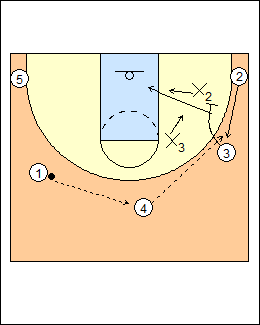NBA 5-out
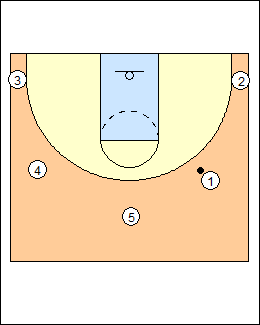 | 1 Joshua Longstaff FIBA Coaching Clinics (YouTube) 5-Out Offense, Reading Defence First thing at the NBA level when trying to build an offence is what's important to us and what our best players are good at. Three things are important to him - playing with pace (fast, ahead of the defence) - playing with great space - playing together (sharing the ball). An alignment with 5 players on the perimeter gives the most space possible, and makes it easier to read the defence. There are 5 spots - the attack spot (the guy with the ball), strongside corner, trail spot (middle), weakside wing, and weakside corner. Anybody can be in these spots, it's a positionless offence. See Fast breaks - Early 5-out actions, Two-side, also Fast break (5 on 0 cycles). |
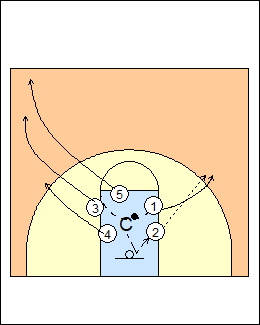 | 2 1) Defensive rebound Getting to these spots after a defensive rebound by one player, they don't want players to cross the split line, the other players run hard and wide, get as much space as possible. The outlet pass is ballside. If there are 3 players on the same side of the floor, the first player runs the baseline to the other corner. The rebounder automatically goes to the middle of the floor (the trail spot), it could be a guard or a big. a) To drill it, have players circle up, coach tosses a ball off the backboard, here 2 rebounds, 5-3-4 start to run hard and wide up the left side, 1 runs wide on the right. The rebounder outlets on whatever side of the split line he is on (i.e. ballside), here to 1. |
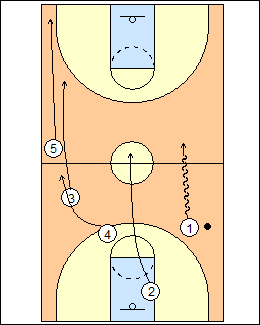 | 3 5 starts to run down to the corner, 3 runs to the wing, 4 runs right behind 3. Rebounder 2 is in the middle of the floor. 1 and 2 come up the floor. |
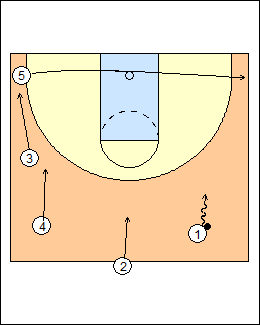 | 4 With three players on one side, 5 runs through to the other corner. |
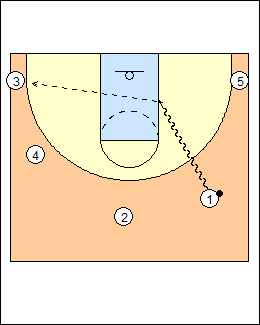 | 5 Now all 5 spots are filled. The first thing they teach is for 1 to drive it into the paint, he sees all this space, so they don't want anyone running into the paint as he is trying to drive. Play drive and kick to create advantages for teammates. Each player has different skills and what they are good at. If 1 passes to 3 in the corner and 3 is a shooter or ballhandler he can read the defence and shoot or drive into the paint. |
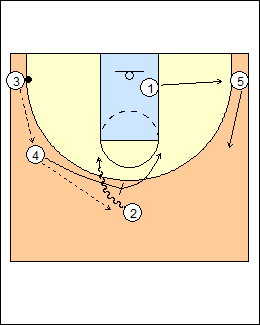 | 6 If 3 swings it to 4 who is not a shooter, he would pass and create an action, chase it into a pick and roll. Reads for players are based on their strengths. |
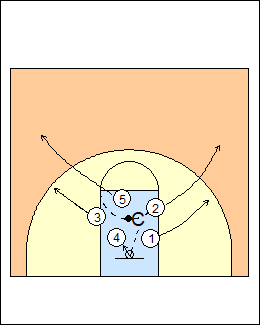 | 7 b) Here 4 rebounds, the other players run hard and wide, |
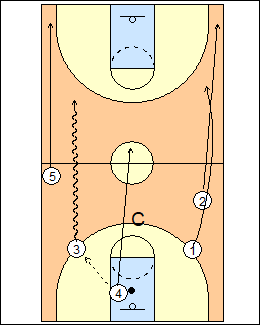 | 8 4 outlets to 3 and fills the middle. No one needs to change sides. Alex Sarama - Conceptual Offence - on a miss, whoever rebounds is the point guard, with no outlet. Kirby Schepp (Schepp 5-out) - he plays with only one position, a point guard. If there is a three side, the middle guy cuts through. If 1 rebounds he can push it up the middle or up one side. Matt Lewis - 3 Drills for Motion Offence - they assign two roles, a) bust-out player, who can rebound and dribble or pass up the floor, b) outlet player, who must pass to a bust-out guy after rebounding. |
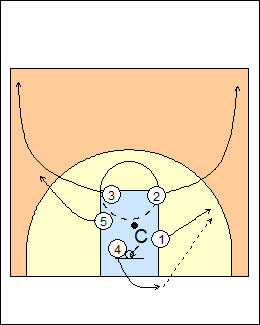 | 9 2) Made Basket They want to play with really high pace, get up the floor before the defence gets back and gets set. The closest player to the ball takes it out, it could be the point guard. Coach scores the ball, here 4 takes it out and inbounds to 1. |
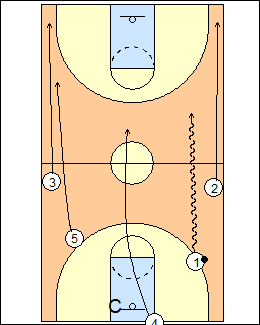 | 10 Everyone moves up the floor, 4 takes the trail spot. Progression - players move around in the middle of the paint, coach shoots, if it's a make the closest player takes it out of bounds, everyone else moves to their spots high and wide, it's the same thing on a miss for the rebounder. John Leonzo - players jog in a circle, coach tosses a ball up and calls the name of a player who rebounds, play it like a miss, score and inbound at the other end. |
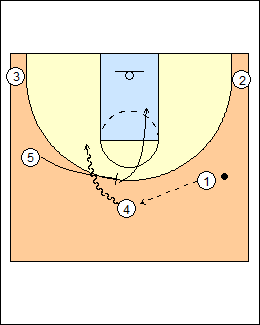 | 11 3) How do you build reads out of this kind of spacing? a) A lot of times the bigs will end up in the trail spot or opposite wing because they get a rebound or are defending a bigger player down in the paint. Swing Fist - swing the ball to the middle, the big comes right into a pick and roll. |
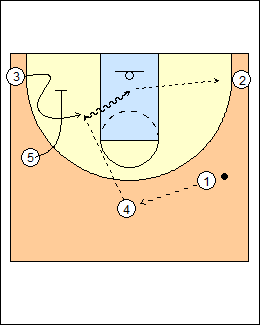 | 12 b) Swing Point Swing the ball, 5 screens for 3. 3 curls it for a pass if his defender goes over the top, into drive and kick. |
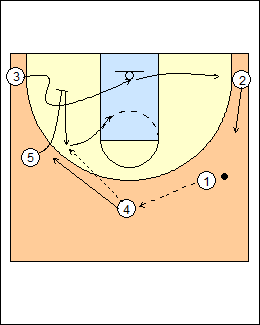 | 13 If 3 is not open, 5 comes right back for a pass, 4 comes off for a handback, 5 rolls to the basket. |
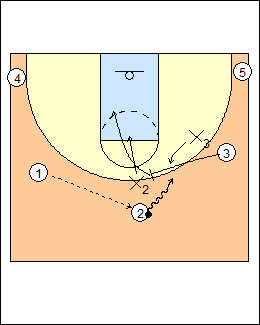 | 14 c) Here 5 is in a corner, Swing-Fist is with two smalls, defence will most likely switch. They want 3 to screen on the low side so that X2 can't switch underneath, and X2 is behind 3 when he rolls to the basket. In today's game, bigs need to able to handle the ball, and smalls need to be able to set a screen and roll to the basket. |
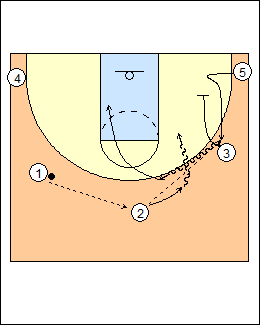 | 15 d) On Swing-Point with 5 in the corner, he might not be comfortable coming off the screen and shooting a 3. If X5 goes over the screen, 5 curls it and seals in the paint. If X5 goes under (5 can't shoot), 5 comes off the screen, if he gets a pass and is not going to shoot, 5 will flip it right back to 2, who comes off a pick and roll. |
This page was made with Basketball playbook from Jes-Soft
